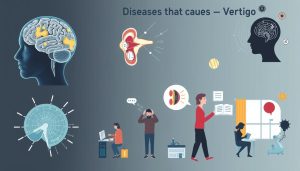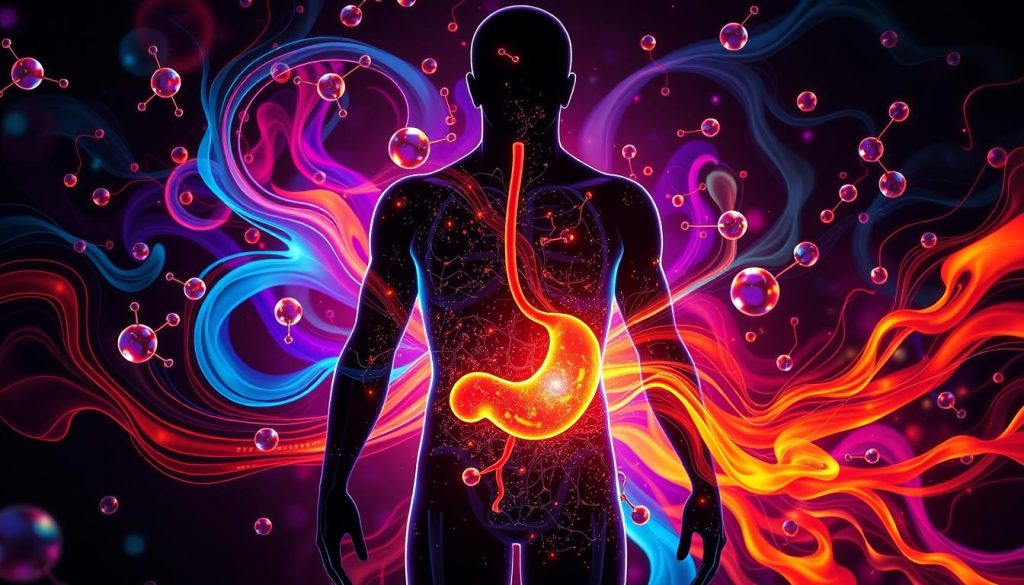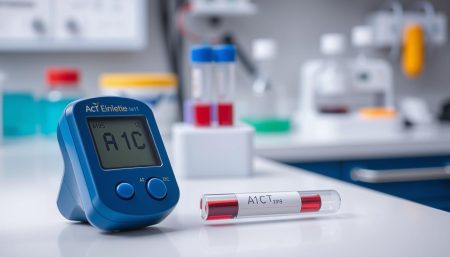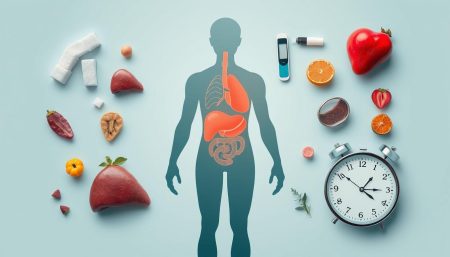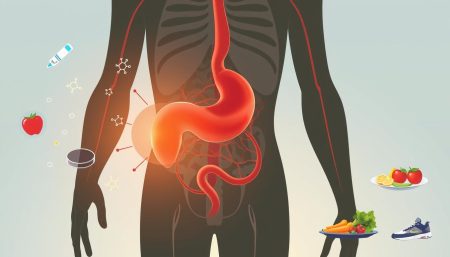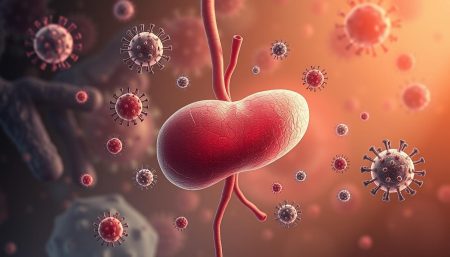The term diabetes mellitus refers to a group of metabolic conditions. They are all marked by high glucose levels in the blood. It’s a major chronic disease that affects millions globally. It needs constant medical care and self-management to avoid serious problems.
This article aims to make diabetes mellitus easier to understand. We’ll provide a clear diabetes mellitus definition. We’ll also explore its causes, types, symptoms, treatments, and how to manage it.
Diabetes mellitus is about the body’s struggle to control glucose. It can happen when the body doesn’t make enough insulin, like in type 1 diabetes. Or, it can be when the body can’t use the insulin it makes, which is common in type 2 diabetes.
This section aims to give a solid foundation. It’s to help people understand diabetes better. This knowledge is key to making smart health choices. It’s also important for keeping the heart healthy.
Learning more about cardiovascular disease and cholesterol can help too. It adds to the understanding of staying well overall.
Think of diabetes as a complex issue, not just a disease. It involves glucose, insulin, and energy in cells. The next chapters will break it down, explaining the science and practical aspects.
This will help you understand diabetes mellitus deeply. The fight against this chronic disease starts with knowledge. This article is your first step on that journey.
What is Diabetes Mellitus?
Diabetes mellitus is a metabolic disorder with high blood sugar levels for a long time. It happens when there’s a problem with insulin production or how it works. This affects how the body uses glucose.
The Basic Diabetes Mellitus Definition
The diabetes mellitus definition covers any disease that makes blood sugar too high. It’s not just one disease but a group of conditions. These conditions affect how the body handles blood sugar.
Types of Diabetes Mellitus
There are mainly two types of diabetes: type 1 diabetes and type 2 diabetes. Type 1 diabetes is when the body doesn’t make insulin. It’s often found in children and young adults.
Type 2 diabetes is more common. It affects how the body uses glucose. It’s usually found in adults over 45.
| Feature | Type 1 Diabetes | Type 2 Diabetes |
|---|---|---|
| Age of onset | Typically young (children/teens) | Usually older (over 45 years) |
| Body’s insulin production | No insulin production | Insufficient insulin production or use |
| Management method | Insulin injections | Diet, exercise, and sometimes insulin or other medications |
| Associated risk factors | Genetic, autoimmunity | Obesity, lifestyle |
Understanding Blood Sugar and Glucose
In both types of diabetes, controlling blood sugar levels is key. Blood sugar, or glucose, is the main sugar in your blood. It comes from food and is your body’s main energy source.
Keeping glucose levels balanced is important. This is done through diet, medication, or insulin therapy. It helps prevent symptoms and long-term health problems.
The Distinction Between Type 1 and Type 2 Diabetes
It’s important to know the differences between type 1 and type 2 diabetes. Each type has its own unique characteristics and ways to manage it. Understanding insulin and the immune system is key.
Characteristics of Type 1 Diabetes
Type 1 diabetes is an autoimmune disease. It attacks and destroys the insulin-making cells in the pancreas. This means people with type 1 diabetes need to take insulin every day to control their blood sugar.
How Type 2 Diabetes Differs from Type 1
Type 2 diabetes is different because the body can’t use insulin well. This is called insulin resistance. At first, the pancreas makes more insulin, but it can’t keep up. This leads to high blood sugar levels.
Type 2 diabetes is linked to genetics and lifestyle choices. It’s not caused by the immune system like type 1 diabetes is.
Managing both types of diabetes requires watching blood sugar, diet, and lifestyle. Knowing the differences in causes and treatments is essential for controlling the disease and avoiding complications.
Diagnosing Diabetes Mellitus
Diagnosing diabetes involves a series of tests that check blood sugar levels and how well the body handles glucose. Quick and accurate diagnosis is key to managing diabetes and preventing complications.
Three main tests are used to diagnose diabetes: the fasting blood glucose test, the hemoglobin A1c test, and the oral glucose tolerance test. Each test gives important information about glucose management.
| Diagnostic Test | Description | Typical Indication for Diabetes |
|---|---|---|
| Fasting Blood Glucose Test | Measures blood glucose after an overnight fast | > 126 mg/dL on two separate tests |
| Hemoglobin A1c Test | Gauges average blood glucose over the last 3 months | > 6.5% |
| Oral Glucose Tolerance Test | Assesses glucose levels before and two hours after consuming a sweet drink | Two-hour glucose level > 200 mg/dL |
Early diagnosis of diabetes, thanks to these tests, makes treatment more effective. It helps control blood sugar levels and prevent diabetes-related health problems.
Recognizing the Symptoms of Diabetes
It’s important to know the signs of diabetes early. This helps in managing the condition better. Both type 1 and type 2 diabetes show similar symptoms that need attention.
Common Symptoms Across Diabetes Types
Diabetes types 1 and 2 share common signs. High blood sugar, or hyperglycemia, is a key indicator. It causes frequent urination and increased thirst.
Another symptom is unusual weight loss. This happens even when you eat normally. Your body uses muscle and fat for energy instead of glucose.
- Polyuria (frequent urination)
- Polydipsia (increased thirst)
- Unexplained weight loss
When to Seek Medical Advice
If you see any of these symptoms, see a doctor. Early action can prevent serious problems. A doctor can confirm the diagnosis with blood tests and help manage the symptoms.
Understanding the Role of Insulin in Diabetes
Insulin is key in controlling blood sugar levels, which is vital for health, mainly for those with diabetes. This hormone, made by the pancreas, helps break down carbs and fats. It does this by moving glucose from the blood to cells in the liver, fat, and muscles.
Knowing how insulin and glucose work together helps us understand diabetes. It shows why managing diabetes is so important.
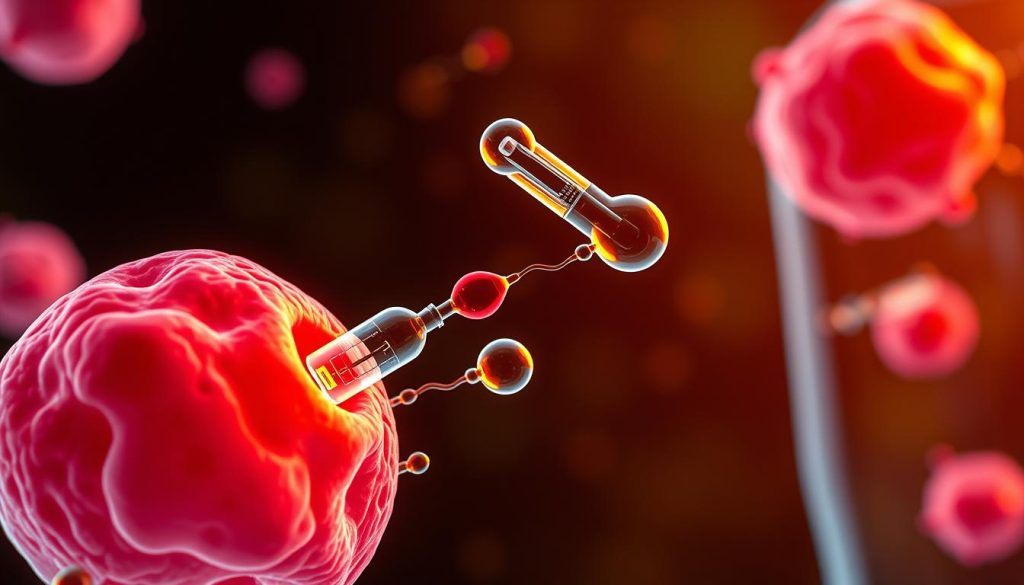
In people without diabetes, the pancreas makes insulin when they eat. This keeps blood sugar levels balanced. But, for those with diabetes, this doesn’t work right.
Type 1 diabetes happens when the pancreas can’t make enough insulin. This is because the immune system attacks insulin-making cells. Type 2 diabetes is when cells don’t respond well to insulin, so more is needed to control blood sugar.
- Insulin is key for getting glucose into cells for energy.
- When insulin production or use is off, blood sugar levels go up.
- Keeping glucose and insulin levels in check is key in diabetes care.
| Aspect | Type 1 Diabetes | Type 2 Diabetes |
|---|---|---|
| Insulin Production | Minimal to none | Normal initially, decreases over time |
| Body’s Response to Insulin | Normal | Decreased (insulin resistance) |
| Management Approach | Insulin replacement therapy | Lifestyle changes, medication, and possibly insulin |
To manage diabetes well, it’s important to understand how insulin and glucose affect blood sugar. By managing these interactions, people with diabetes can improve their health and lower the risk of complications.
Hyperglycemia: The Risks of High Blood Sugar Levels
High blood sugar, or hyperglycemia, is a big risk for people with chronic diseases like diabetes. It’s key to know the difference between short-term and long-term high blood sugar. This helps manage the condition and lower health risks.
Acute vs. Chronic Hyperglycemia
Acute hyperglycemia is when blood sugar goes up for a short time. This can happen because of what we eat, stress, or being sick. On the other hand, chronic hyperglycemia means blood sugar stays high for a long time. If not controlled, it can cause serious health problems.
Signs and Consequences of Elevated Blood Sugar
It’s important to know the signs of high blood sugar. Symptoms include feeling very thirsty, needing to pee a lot, feeling tired, and blurry vision. Long-term high blood sugar can harm important parts of our body.
The table below shows health problems that can happen from high blood sugar:
| System/Organ | Short-term Impact | Long-term Consequences |
|---|---|---|
| Circulatory System | Increased heart rate | Increased risk of cardiovascular disease |
| Kidneys | Stress on kidney function | Chronic kidney disease, possible kidney failure |
| Eyes | Blurred vision | Risk of diabetic retinopathy and vision loss |
| Nervous System | Impaired nerve function | Peripheral neuropathy (loss of sensation in extremities) |
To manage blood sugar, it’s important to check levels often, eat right, and get medical help. This helps avoid both short-term and long-term high blood sugar problems.
The Impact of Lifestyle on Diabetes Management
Diabetes management is more than just medicine. It’s also about lifestyle choices. Diet, exercise, and stress management are key to keeping blood sugar in check. Making these habits part of your daily routine is essential for managing diabetes.
Lifestyle changes are vital for better diabetes care. Focusing on what you eat, staying active, and taking care of your mental health can greatly improve blood sugar levels and overall health.
- Nutrition: Eating foods with a low glycemic index helps keep blood sugar stable.
- Exercise: Regular physical activity improves insulin sensitivity, helping your body control blood sugar better.
- Stress Management: High stress can raise blood glucose levels. Activities like meditation or yoga can help.
A balanced diet not only helps control blood sugar but also boosts overall health. It lowers the risk of diabetes complications. Regular exercise also helps manage diabetes by reducing insulin resistance. Stress management can prevent the blood sugar spikes caused by stress hormones.
Starting these lifestyle changes might seem hard, but small, achievable goals can help. Here are some tips to get you started:
- Plan your meals: Create a weekly meal plan that balances carbs, proteins, and fats to keep blood sugar stable.
- Set exercise milestones: Start with simple exercises and gradually increase the intensity. For example, begin with daily 15-minute walks and then add more vigorous activities like cycling or jogging.
- Practice mindfulness: Spend a few minutes each day on mindfulness or meditation to manage stress well.
By focusing on thriving with diabetes, making thoughtful lifestyle choices can create a strong foundation for managing the condition. This shows how everyday habits can greatly impact our health.
Complications Arising from Untreated Diabetes
Untreated diabetes is a chronic disease that raises the risk of many health problems. These issues can greatly affect a person’s life quality and how long they live. It’s important for those with diabetes or at risk to understand these complications.
Short-Term Complications
Short-term problems from untreated diabetes include hypoglycemia and diabetic ketoacidosis. Hypoglycemia is when blood sugar is too low. Diabetic ketoacidosis happens when blood sugar is too high, causing acids to build up in the body. Both need quick medical help to avoid serious harm.
Long-Term Damage from Diabetes
Long-term effects of high blood sugar can cause serious health issues. Here’s a closer look at these problems:
| Complication | Impact |
|---|---|
| Cardiovascular Disease | Increases risk of heart disease, stroke, and hypertension. |
| Neuropathy | Nerve damage leading to pain and numbness, mainly in hands and feet. |
| Nephropathy | Damage to kidney’s filtering system, potentially leading to kidney failure. |
| Retinopathy | Damage to the retina, causing vision impairment or blindness. |
These complications can greatly reduce life quality. But, they can be prevented with proper diabetes care. It’s key for those with diabetes or at risk to closely watch and manage their blood sugar levels to avoid these problems.
Diabetes Management: Keeping Blood Sugar in Check
Managing diabetes well means keeping an eye on glucose levels and controlling blood sugar. These steps help avoid serious health problems and improve daily life. It’s important to know how new technology helps in diabetes care.
Monitoring Techniques and Technology
New ways to check glucose levels have changed diabetes care for the better. Continuous Glucose Monitoring (CGM) systems are a big step forward. They give real-time info on blood sugar levels, making it easier to track without finger-prick tests.
- CGM devices track glucose levels all day and night, giving a full picture.
- They send alerts and show trends, helping patients make better choices about food and medicine.
Navigating Daily Life With Diabetes
Keeping blood sugar levels right is a daily battle. It needs a mix of good food, exercise, and medicine. Learning about carbs and how exercise affects blood sugar helps people make better choices.
| Aspect | Recommendation | Benefit |
|---|---|---|
| Nutrition | Balanced diet with controlled carb intake | Stabilizes blood sugar levels |
| Exercise | Regular physical activity | Improves insulin sensitivity |
| Medication | Adherence to prescribed medications | Prevents spikes and drops in glucose levels |
Using these tips every day helps keep blood sugar stable. It also leads to a healthier life with diabetes.
Treatment Options for Diabetes Mellitus
Managing diabetes mellitus needs a mix of medical care and lifestyle changes. The main goal is to keep blood sugar levels normal to avoid serious problems. We’ll look at insulin therapy, other medicines, and important lifestyle changes.
Insulin Therapy and Alternatives
Insulin therapy is key for Type 1 diabetes and important for some Type 2 diabetes patients. It involves insulin shots to control blood sugar. There are many types of insulin, each with its own speed and duration of action.
Other medicines are also used. Sulfonylureas boost insulin from the pancreas, and metformin cuts down liver glucose production. For those not wanting insulin shots, GLP-1 receptor agonists help control blood sugar without causing low blood sugar and also help with weight.
Medication and Lifestyle Adjustments
Dealing with diabetes mellitus goes beyond just medicine. Making lifestyle changes is also vital. Eating right, staying active, and keeping a healthy weight are key. A diet full of fiber and low in sugar helps control blood sugar. Exercise also boosts insulin sensitivity.
Learning from others and support groups is helpful. Knowing how lifestyle affects diabetes is important. You can learn more about managing blood sugar and diet through these resources.

| Treatment Type | Description | Benefits |
|---|---|---|
| Insulin Therapy | Administering insulin injections to regulate blood sugar levels. | Directly manages blood sugar, essential for Type 1 diabetes. |
| Metformin | Reduces liver’s glucose production. | Decreases need for insulin, aids in long-term blood sugar control. |
| Lifestyle Changes | Incorporates diet, exercise, and weight management. | Increases insulin sensitivity, improves overall health. |
Nutritional Considerations for Diabetes Patients
Proper nutrition is key for managing diabetes mellitus. It helps keep blood sugar levels stable. Knowing which foods to choose and avoid is vital for managing diabetes well.
Carbohydrates affect blood sugar levels the most. For people with diabetes, it’s not just about how much they eat. It’s also about what kind of carbs they consume. Opt for complex carbs like whole grains because they digest slowly and raise blood sugar levels gradually.
- Whole grains like brown rice, quinoa, and whole wheat
- Fruits and vegetables, preferably with low glycemic indexes
- Lean proteins such as chicken, fish, and legumes
- Healthy fats from nuts, seeds, and avocados
Consistency in meals is also important. Eating at regular times helps keep blood sugar levels steady. It prevents sudden spikes or drops that can harm your health.
Controlling portions is another critical part of nutrition for diabetes mellitus. Use measuring tools and learn about serving sizes. This helps ensure meals are balanced and meet your diabetes management needs.
Lastly, drinking water is good for managing diabetes. Water doesn’t raise blood sugar levels. It’s better than sugary drinks that can cause spikes.
Keeping a diet that supports stable blood sugar levels is vital for diabetes management. It requires a balanced diet, careful monitoring of blood sugar, and adjusting your diet as needed.
Adopting a Holistic Approach to Living with Diabetes
Effective diabetes management comes from a holistic approach. This method looks at the whole person, not just blood sugar levels. It includes important lifestyle changes for physical, emotional, and mental health.
The ‘holistic approach’ sees the person as a whole, not just their blood sugar. Adding mental health support, exercise, and good nutrition can greatly improve life for those with diabetes.
- Lifestyle Changes: Regular exercise and a healthy diet are key to a holistic diabetes care plan.
- Emotional Well-being: Mental health is vital, with counseling or stress management helping a lot.
- Social Support: Having a support network through groups or community resources is very helpful.
By looking at all health aspects, people with diabetes can greatly improve their well-being. Diet, exercise, and reducing stress are not just for managing the disease. They are essential for overall health.
In summary, managing diabetes is more than just controlling blood sugar. It’s about living a healthier lifestyle that boosts overall health. This holistic approach makes managing diabetes more effective and helps live a fulfilling life despite diabetes challenges.
Is It Possible to Prevent Diabetes?
Type 1 diabetes usually can’t be prevented. But, there’s hope for type 2 diabetes. By tackling key risk factors, we might delay or even stop it. This shows that changing our lifestyle and health habits could help prevent diabetes.
Potential for Prevention in Type 2 Diabetes
Many experts say making big changes in our lifestyle can lower the risk of type 2 diabetes. This is very important because many things we can change contribute to getting this disease.
Risk Factors and Prevention Strategies
Knowing what increases our risk is key to preventing diabetes. Factors like being overweight, not moving enough, and eating poorly are big ones. But, by changing these, we can change our health future.
| Risk Factor | Prevention Strategy |
|---|---|
| Obesity | Maintain a healthy weight through diet and exercise |
| Sedentary Lifestyle | Incorporate regular physical activity into daily routine |
| Poor Diet | Adopt a balanced, nutritious diet low in processed foods and sugars |
Diabetes Mellitus in the Younger Population
Diabetes mellitus is becoming more common in young people. This brings special challenges for managing diabetes in this age group. It’s important to find diabetes early and create management plans that fit each child or teen.
Recognizing Diabetes in Children and Adolescents
Finding diabetes early is key to avoiding serious problems. Parents and caregivers should watch for signs like too much thirst, needing to pee a lot, feeling tired, and losing weight without trying. Doctors can also check for diabetes during regular visits.
Managing Childhood Diabetes
Managing diabetes in kids needs a mix of medicine, healthy habits, and learning. It’s vital to support kids and their families with the help they need to manage diabetes.
Keeping a healthy diet and staying active are important for kids with diabetes. Teaching kids and their families about diabetes helps them take charge of managing it.
| Aspect of Management | Recommendations |
|---|---|
| Diet | Consistent carbohydrate intake, healthy meal planning |
| Exercise | At least an hour of moderate to vigorous activity daily |
| Education | Regular sessions on self-monitoring and disease management |
| Medical Care | Routine check-ups, personalized treatment plans |
Using these strategies in a supportive community can improve life and health for kids with diabetes. It makes managing diabetes easier for the younger population.
Diabetes Mellitus Definition: A Closer Look
We’ve explored the diabetes mellitus definition in depth. It covers a range of metabolic disorders with high blood glucose levels. This makes it a chronic disease needing constant management. Knowing about diabetes mellitus is key, given its widespread impact on health worldwide.
Managing diabetes effectively involves recognizing symptoms and using the right tests. It also means sticking to a treatment plan that might include diet changes, medication, insulin, and regular blood checks. The goal is to keep blood sugar levels healthy to avoid serious complications.
In summary, diabetes mellitus is more than just high blood sugar. It’s a story of human strength and the need for a big change in how we live. As we finish this discussion, we give our readers the knowledge to face diabetes with smart choices. This helps keep them healthy and reduces the risks of this ongoing health issue.
FAQ
Q: What is the medical definition of diabetes mellitus?
A: Diabetes mellitus is a chronic disease. It happens when the body can’t control blood sugar levels. This is because the pancreas doesn’t make enough insulin or the body can’t use insulin well.
Q: What are the main types of diabetes mellitus?
A: There are two main types of diabetes mellitus. Type 1 is an autoimmune disease where the immune system attacks insulin-making cells. Type 2 is linked to insulin resistance and lifestyle and genetic factors.
Q: How are blood sugar levels and glucose related to diabetes?
A: Diabetes disrupts the body’s normal blood sugar regulation. Glucose is the main energy source for cells. Insulin helps glucose enter cells. In diabetes, this process is impaired, causing high blood glucose levels.
Q: What distinguishes type 1 from type 2 diabetes?
A: Type 1 diabetes is an autoimmune condition that usually starts in childhood. It requires insulin therapy because the body stops making insulin. Type 2 diabetes often starts later in life. It can sometimes be managed with lifestyle changes and oral medications, as the body produces insulin but uses it poorly.
Q: What methods are used to diagnose diabetes mellitus?
A: Diagnosis involves measuring blood glucose levels. Tests include the fasting plasma glucose test, the hemoglobin A1c test, and the oral glucose tolerance test.
Q: What symptoms are commonly associated with diabetes?
A: Symptoms include frequent urination, increased thirst, unexplained weight loss, fatigue, blurred vision, and slow-healing wounds.
Q: When should one seek medical advice for diabetes?
A: Seek medical advice if you have symptoms of diabetes. Risk factors include obesity, a family history of diabetes, a sedentary lifestyle, or a history of gestational diabetes.
Q: What role does insulin play in diabetes?
A: Insulin is a hormone that regulates blood sugar levels. In type 1 diabetes, the body doesn’t produce insulin. In type 2 diabetes, the body doesn’t use insulin properly.
Q: What are the risks of high blood sugar levels?
A: High blood sugar levels can cause ketoacidosis and chronic complications. These include cardiovascular disease, kidney failure, nerve damage, and vision problems.
Q: How does lifestyle impact diabetes management?
A: Lifestyle choices, like diet, exercise, and stress management, are key in managing diabetes. Making positive lifestyle changes can help keep blood sugar levels balanced and prevent complications.
Q: What complications can arise from untreated diabetes?
A: Untreated diabetes can lead to short-term and long-term complications. These include diabetic ketoacidosis, cardiovascular diseases, neuropathy, nephropathy, and increased susceptibility to infections.
Q: What are current treatment options for diabetes mellitus?
A: Treatment options include insulin therapy for type 1 diabetes, oral medications for type 2 diabetes, and lifestyle modifications. These include diet, physical activity, and weight management for both types.
Q: Why are nutritional considerations important for diabetes patients?
A: Nutrition is critical for diabetes care. The type and quantity of food consumed directly affect blood sugar levels. A balanced diet can help manage blood sugar and prevent spikes and drops that could lead to complications.
Q: Is it possible to prevent diabetes, particularily type 2?
A: Yes, it is possible to prevent type 2 diabetes or delay its onset. Addressing risk factors like overweight, inactivity, and poor diet can significantly lower the risk of developing type 2 diabetes.
Q: How can diabetes mellitus affect the younger population?
A: Diabetes mellitus in children and adolescents is increasingly common, mainly type 1 diabetes. It’s essential to recognize symptoms early and manage the condition through insulin therapy, diet, exercise, and education, to avoid complications in the younger population.
Q: Can adopting a holistic approach aid in diabetes management?
A: Adopting a holistic approach to diabetes management can significantly improve quality of life and overall health outcomes. This includes taking care of physical, emotional, and psychological well-being.




